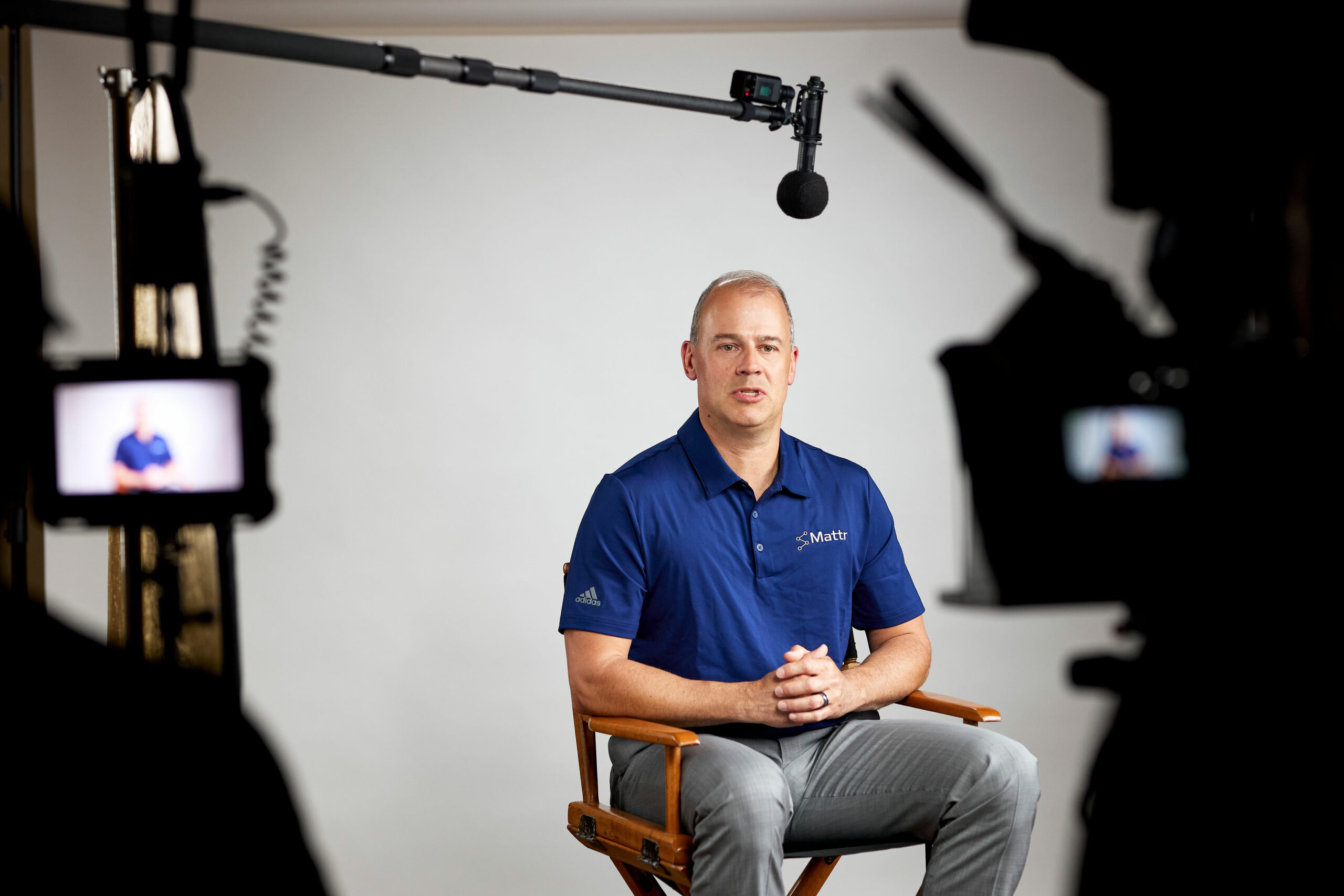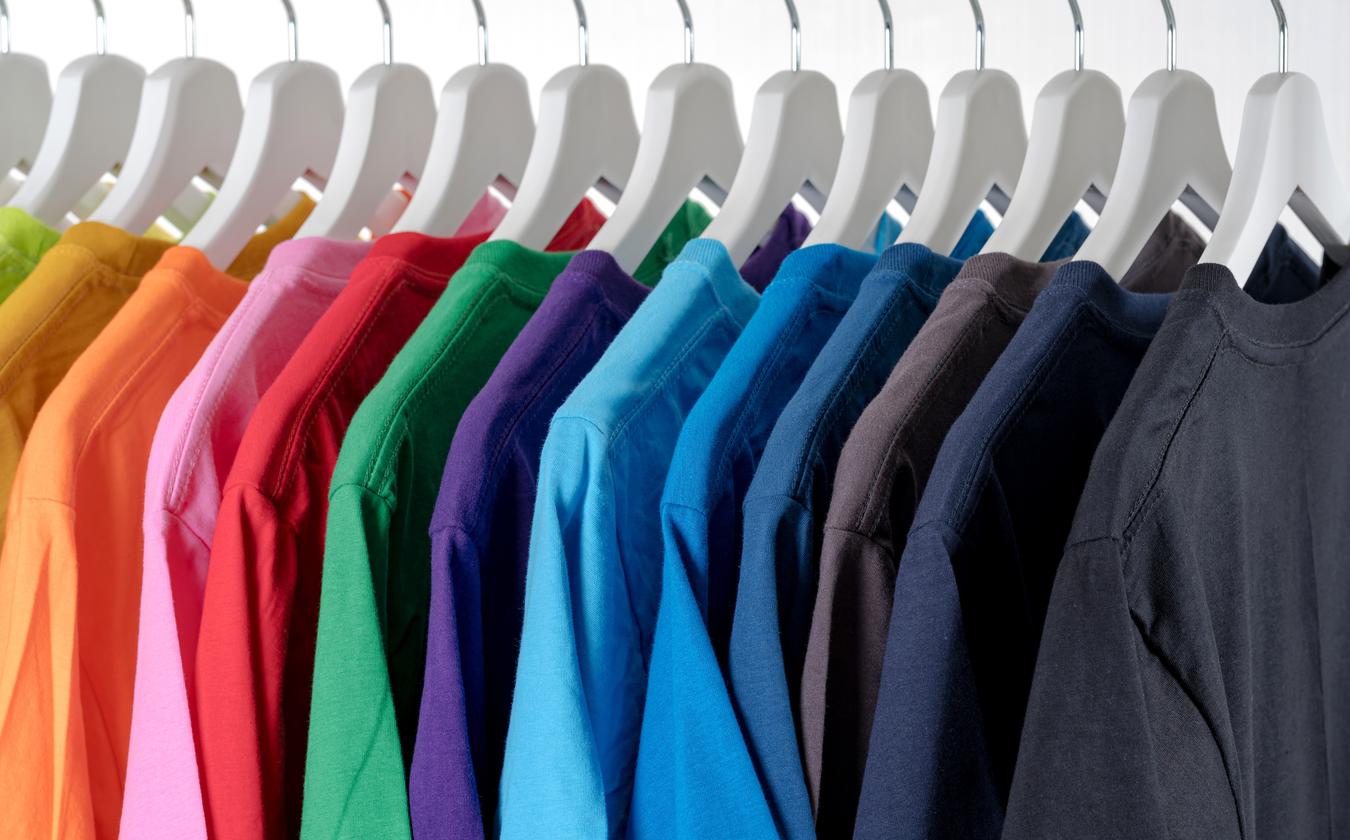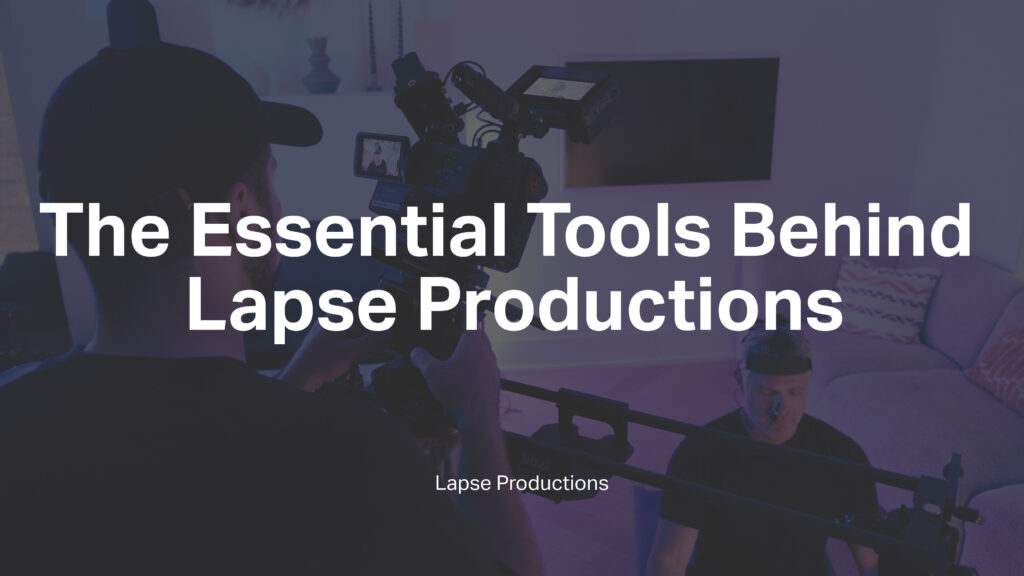What to Wear for On-Camera Interviews: Your Ultimate Guide
Welcome to the latest entry on the Lapse Productions blog! When stepping in front of a camera, whether it’s for a professional interview, a personal vlog, or a critical business meeting, the way you present yourself can make a significant impact. It’s not just about looking good; it’s about feeling confident and conveying your message without distractions. Clothing choices play a crucial role in this process, affecting not only how viewers perceive you but also how you perceive yourself.
In this guide, we delve into the essentials of dressing for success in on-camera interviews. From understanding how camera dynamics influence the appearance of your clothes to selecting the right colors, patterns, and accessories, we’ve got you covered. Our goal is to arm you with the knowledge to make informed wardrobe choices that boost your on-screen presence.
Whether you’re preparing for your first on-camera appearance or you’re looking to refine your presentation, the following tips will ensure you look and feel your best. Let’s get started by exploring how camera dynamics can impact your outfit choices.
Understanding Camera Dynamics
When preparing for an on-camera interview, it’s essential to consider how different elements of camera dynamics can impact your appearance. Lighting, camera angles, and even the camera’s resolution can change how your outfit looks on screen. Here’s what you need to know to ensure you look your best:

Lighting
Lighting can dramatically alter the appearance of your clothes. Bright lights can wash out lighter colors, making them appear more muted than they do in person. Conversely, dark colors can look even darker, potentially obscuring detail and shape. To counteract these effects, opt for mid-tone colors that remain consistent under various lighting conditions.
Camera Angles
The angle at which the camera captures your image can also affect how your clothes look. For example, certain angles can exaggerate the size of patterns or the depth of textures, causing distractions. It’s generally best to choose outfits with minimal patterns and textures to maintain a clean and professional appearance on screen.
Resolution and Detail
High-definition cameras capture a lot of detail, which means they can also highlight imperfections in clothing, such as wrinkles or lint. Choose materials that are less prone to wrinkling and ensure your outfit is well-maintained and clean. A quick check before going on air can help you catch any issues that the camera might exaggerate.
By keeping these camera dynamics in mind, you can make smarter choices about what to wear for your on-camera interview. The right outfit will help you look polished and professional, ensuring the focus remains on you and your message.
Color Choices
Choosing the right colors to wear on camera is not just about what looks good; it’s about what communicates trust, professionalism, and aligns with your message. Here’s how to pick the best colors for your on-camera interviews:

Best Colors to Wear
- Solid, Mid-Tone Colors: Blue, green, and pastel colors work well on camera because they are easy on the eyes and ensure that the focus stays on you, not your clothing.
- Rich, Deep Colors: Shades like navy blue, burgundy, and forest green can convey authority and professionalism.
- Neutral Tones: Grey, beige, and taupe are excellent for a subtle, sophisticated look that doesn’t distract from your face or message.
Colors to Avoid
- Bright White: It can cause glare and make it hard for the camera to balance exposure, often leading to a washed-out appearance.
- Pure Black: While it’s a classic choice, black can absorb light and diminish dimensionality in your appearance, making you look flat on camera.
- Vibrant Reds and Oranges: These can be too overpowering and may cause color bleeding on camera, which distracts from your facial expressions.
Complementing the Interview Backdrop
Before deciding on an outfit, consider the interview’s backdrop. Avoid colors that clash or blend too seamlessly with the background. If the background is neutral, you have more flexibility with color choices. However, if it’s colorful or patterned, aim for contrasting colors that stand out without causing a visual conflict.
Final Tips
- When in doubt, do a camera test with your outfit choices. This can help you see how the colors look through the lens and under the interview lighting conditions.
- Remember, the color of your clothing can also affect mood and perceptions. Choose colors that align with the message you want to convey and the atmosphere of the interview.
By carefully selecting colors that enhance your on-camera presence, you’ll not only look great but also feel more confident in delivering your message.
Patterns and Textures
While the right color can set the stage for a successful on-camera appearance, the patterns and textures of your clothing can significantly influence your look on screen. Here’s how to navigate these details:
Patterns to Embrace and Avoid
- Embrace Small, Subtle Patterns: If you prefer not to wear solid colors, opt for small, subtle patterns that won’t overwhelm the viewer or cause moiré patterns—a visual perception that creates a wavy, distorted appearance on camera.
- Avoid Large, Busy Patterns: Big, bold patterns can be distracting and take the focus away from you. Stripes, herringbone, checks, and complex geometric patterns can also interact oddly with the camera, leading to the moiré effect.
Textures That Work Well on Camera
- Go for Smooth, Matte Fabrics: Fabrics that are too shiny or glossy can reflect studio lights, causing glare and making it difficult for viewers to focus on your face. Matte textures, on the other hand, absorb light evenly, ensuring a more flattering look.
- Consider the Feel and Movement: Textures that move well and don’t constrict your body language can help you appear more natural and relaxed on camera. Fabrics like cotton, wool blends, and soft knits are comfortable choices that look good on screen.
Avoiding Common Texture Pitfalls
- Steer Clear of Highly Reflective Materials: Sequins, satin, or other shiny materials can be problematic under studio lights. They can create hot spots or glare that distracts from your message.
- Watch Out for Too Much Texture: While some texture can add depth to your appearance, too much can appear busy and clutter the frame, especially in close-up shots. Aim for a balance where your clothing enhances rather than competes with your on-screen presence.
Final Tips
- Conduct a camera test with your selected outfit, focusing on how different patterns and textures appear on screen. This can help you identify what works best in the specific lighting and background of your interview setting.
- Remember, the goal is to complement your appearance and convey your personality without overshadowing the content of your interview.
By carefully selecting patterns and textures, you ensure that your attire supports your on-camera effectiveness, allowing your message and personality to shine through.
Fit and Comfort
The way your clothes fit can make a significant difference in how confident and comfortable you feel during an on-camera interview. Here’s how to ensure your outfit not only looks great but feels great too.
Importance of a Good Fit
- Well-fitting Clothes Boost Confidence: Clothes that fit well naturally make you feel more confident and comfortable. This confidence translates on camera, contributing to a positive, authoritative presence.
- Avoid Too Tight or Too Loose Garments: Clothing that is too tight can be distracting and uncomfortable, potentially hindering your ability to communicate effectively. On the other hand, overly loose clothing can appear unkempt and reduce your perceived professionalism. Aim for a tailored fit that flatters your shape without constraining your movement.
Comfort is Key
- Choose Breathable, Flexible Fabrics: For long interviews or shoots, wearing breathable fabrics that allow for easy movement can help you stay comfortable and focused. Materials like cotton, linen, and certain blends can offer comfort and maintain a polished look.
- Consider Layering for Adjustability: Studio temperatures can vary widely. Dressing in layers allows you to adjust your outfit for comfort without sacrificing style. A smart blazer or cardigan over a lighter top can provide flexibility.
Test Your Outfit in Advance
- Practice Sitting and Moving: Before your interview, take the time to sit down and move around in your chosen outfit. This can help you identify any fit issues or discomfort that could become a problem on camera.
- Check Your Outfit from Different Angles: Use a mirror or take photos from various angles to ensure your outfit looks good from every perspective. Pay attention to how the fabric drapes and ensure there are no awkward bulges or gaps.
Final Thoughts
Remember, when you’re comfortable and confident in what you’re wearing, it shows. Your audience’s focus should be on your expertise and what you’re saying, not on adjusting your outfit. Taking the time to select clothes that fit well and feel comfortable can significantly enhance your on-camera presence.
Accessories and Makeup
The right accessories and makeup can complement your outfit and enhance your on-camera presence, but it’s important to know how to choose them wisely.
Accessories: Less is Often More
- Choose Subtle, Non-Reflective Jewelry: Opt for pieces that add a touch of personality without causing distraction. Large, shiny, or noisy jewelry can interfere with audio clarity and distract viewers.
- Glasses and Eyewear: If you wear glasses, consider anti-reflective coating to reduce glare from studio lights. Make sure your frames don’t obscure your eyes, as eye contact is crucial for connecting with your audience.
Makeup: Enhance, Don’t Overpower
- Foundation and Powder: Choose a matte foundation to reduce shine under studio lights. A light application of translucent powder can help maintain a matte finish.
- Eyes and Lips: Define your eyes with neutral shades, and avoid overly bright or shimmering eyeshadows that might reflect light awkwardly. For lips, choose colors that are a bit brighter than your natural lip color to stand out appropriately on camera.
- Contouring and Highlighting: Subtle contouring can help define your facial features, but avoid heavy application that can look unnatural on camera. Use highlighting sparingly to avoid creating glare.
Preparing for the Camera
- Camera Test: Just as with your outfit, conduct a camera test with your accessories and makeup to see how they look under studio lighting. Adjust as necessary to ensure they enhance rather than distract from your appearance.
- Last-minute Checks: Before going on air, do a final check for any makeup smudges or misplaced accessories. Keep makeup for touch-ups and a lint roller handy for any last-minute adjustments.
Final Tips
Remember, the goal of accessories and makeup is to enhance your natural features and express your personal style in a way that’s conducive to the camera’s eye. By paying attention to these details, you can ensure a polished, professional appearance that commands attention for all the right reasons.
Preparation Tips Before Going On Air
The last few moments before you go on camera are crucial for ensuring you look and feel your best. Here are some final preparation tips to ensure you’re camera-ready:
Clothing Checks
- Lint and Pet Hair: Use a lint roller to remove any lint, dust, or pet hair from your clothing. These can be surprisingly visible on camera, especially on dark fabrics.
- Wrinkle-Free Appearance: If your outfit has become wrinkled during transport or while waiting, a portable steamer can quickly refresh your look. Avoid sitting for long periods right before going on air to keep your outfit crisp.
- Fit and Comfort Recheck: Take a moment to ensure everything fits as expected and that you’re comfortable. Adjust any straps, buttons, or other elements to avoid fidgeting on camera.
Mind and Body Preparation
- Hydrate: Drink water to ensure you’re hydrated, but avoid too much right before going on air to minimize interruptions.
- Relaxation Techniques: Practice deep breathing, stretching, or other relaxation techniques to reduce any nervous tension. Being physically relaxed translates into a more confident and engaging presence on camera.
- Mental Rehearsal: Quickly review your key points and the message you want to convey. Confidence in your content can significantly enhance your delivery and on-camera presence.
Backup Plan
- Have a Backup Outfit: If possible, bring a backup outfit. Unexpected spills, tears, or even last-minute changes in the set or lighting can make an alternative choice invaluable.
- Essential Kit: Keep an essential kit handy, including spare makeup for touch-ups, a small mirror, extra jewelry clasps, and safety pins for any unforeseen wardrobe malfunctions.
Final Thoughts
Remember, the most critical aspect of your on-camera interview is not just how you look but how you convey your message. By following these preparation tips, you can ensure that your appearance supports rather than detracts from what you have to say. You’re now ready to step in front of the camera with confidence.
Conclusion
Dressing for on-camera interviews goes beyond simply choosing an outfit; it’s about crafting a presence that enhances your message and connects with your audience. By understanding camera dynamics, selecting appropriate colors, patterns, and textures, ensuring your clothing fits well and is comfortable, and paying attention to the details of accessories and makeup, you can create a visual presence that supports your professional image and personal brand.
Remember, the key is to prepare in a way that allows you to focus on delivering your message with confidence. The tips shared in this guide are designed to help you navigate the complexities of on-camera appearances, ensuring that you look polished, professional, and poised, no matter the occasion.
Now that you’re armed with these tips for making the best on-camera impression, we’d love to hear from you! Share your own experiences, tips, or questions about dressing for on-camera interviews in the comments below. Have you found certain colors or styles that work particularly well for you? Are there preparation routines that help you feel camera-ready? Let’s start a conversation and learn from each other’s experiences.
At Lapse Productions, we’re dedicated to helping you make the most of your on-camera moments, from preparation to final production. If you’re looking for professional video production services that understand the importance of every detail in creating impactful video content, reach out to us. Let’s bring your vision to life, together.
Let’s Create Your Video Today
If you’re looking for top-notch quality, industry expertise, dependability, and competitive pricing, don’t wait any longer. Contact us now for a quote and let’s get started on your project.




